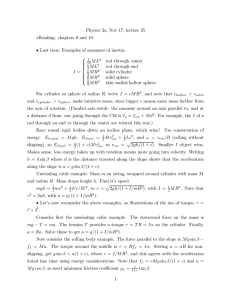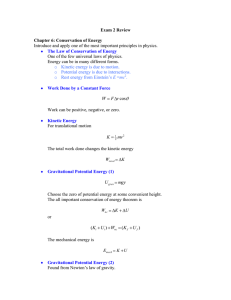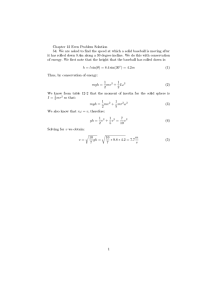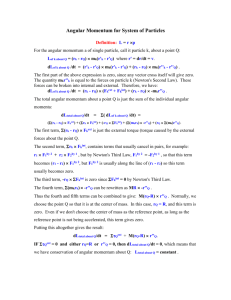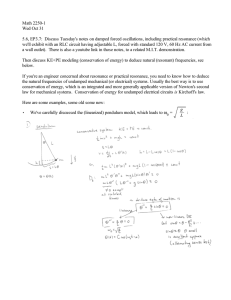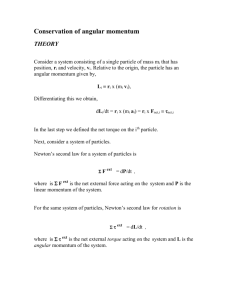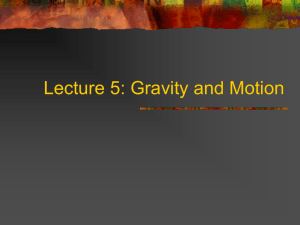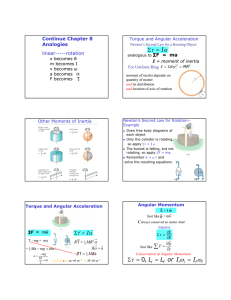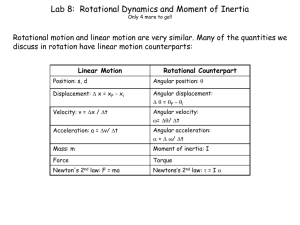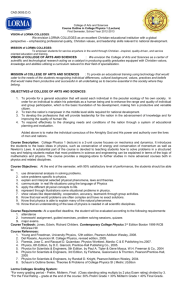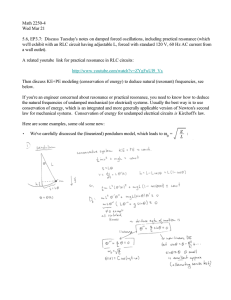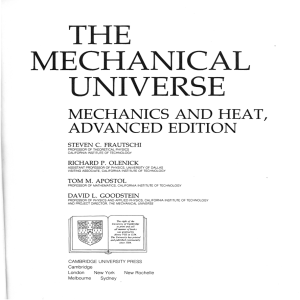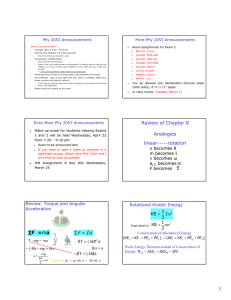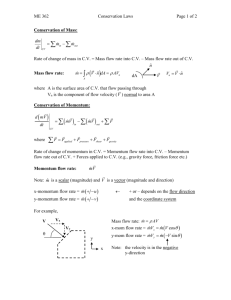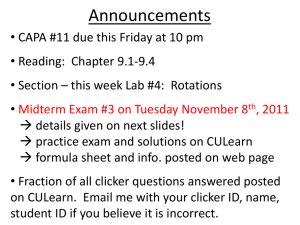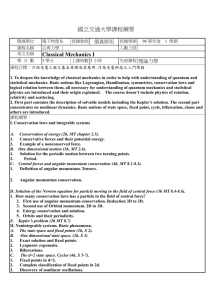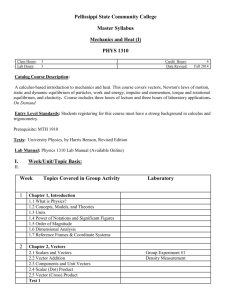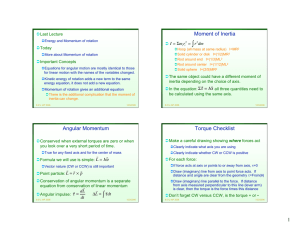Energy and Angular Momentum
advertisement
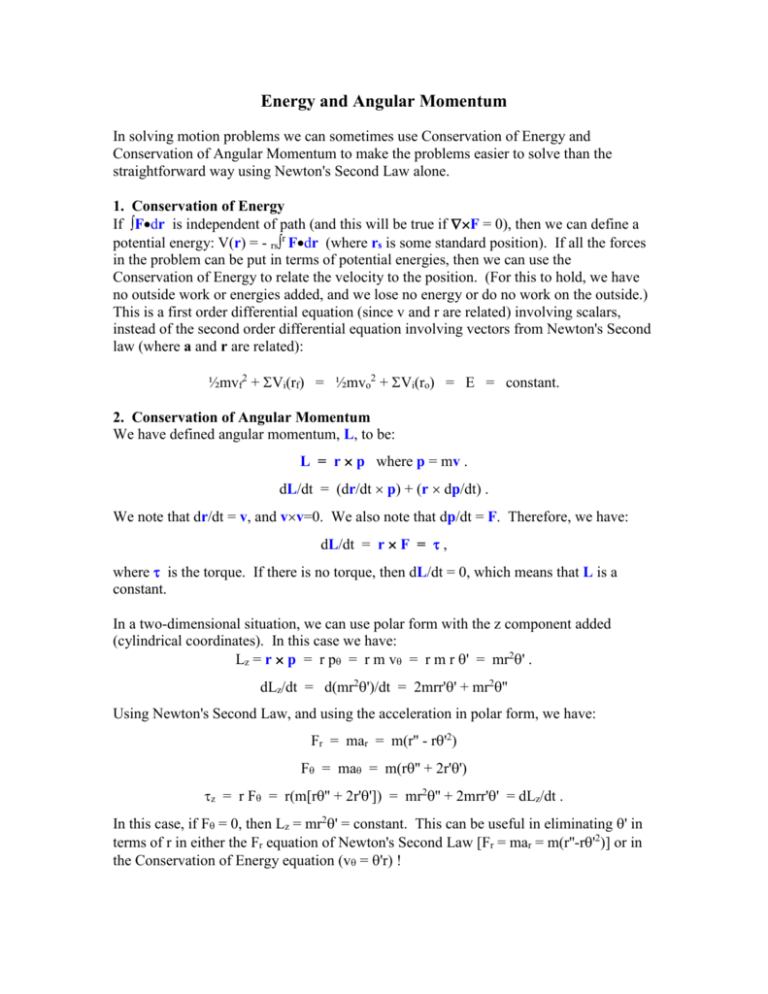
Energy and Angular Momentum In solving motion problems we can sometimes use Conservation of Energy and Conservation of Angular Momentum to make the problems easier to solve than the straightforward way using Newton's Second Law alone. 1. Conservation of Energy If Fdr is independent of path (and this will be true if F = 0), then we can define a potential energy: V(r) = - rsr Fdr (where rs is some standard position). If all the forces in the problem can be put in terms of potential energies, then we can use the Conservation of Energy to relate the velocity to the position. (For this to hold, we have no outside work or energies added, and we lose no energy or do no work on the outside.) This is a first order differential equation (since v and r are related) involving scalars, instead of the second order differential equation involving vectors from Newton's Second law (where a and r are related): ½mvf2 + Vi(rf) = ½mvo2 + Vi(ro) = E = constant. 2. Conservation of Angular Momentum We have defined angular momentum, L, to be: L = r p where p = mv . dL/dt = (dr/dt p) + (r dp/dt) . We note that dr/dt = v, and vv=0. We also note that dp/dt = F. Therefore, we have: dL/dt = r F = , where is the torque. If there is no torque, then dL/dt = 0, which means that L is a constant. In a two-dimensional situation, we can use polar form with the z component added (cylindrical coordinates). In this case we have: Lz = r p = r p = r m v = r m r ' = mr2' . dLz/dt = d(mr2')/dt = 2mrr'' + mr2'' Using Newton's Second Law, and using the acceleration in polar form, we have: Fr = mar = m(r'' - r'2) F = ma = m(r'' + 2r'') z = r F = r(m[r'' + 2r'']) = mr2'' + 2mrr'' = dLz/dt . In this case, if F = 0, then Lz = mr2' = constant. This can be useful in eliminating ' in terms of r in either the Fr equation of Newton's Second Law [Fr = mar = m(r''-r'2)] or in the Conservation of Energy equation (v = 'r) ! Homework Problem #18: A particle of mass, m, moves according to the equations: x(t) = xo + at2 (where a is a constant) y(t) = bt3 (where b is a constant) z(t) = ct (where c is a constant). a) Find an expression for the angular momentum, L(t). b) Find the force, F(t). c) Find the torque, (t). d) Verify that (t) = dL(t)/dt . Homework Problem #19: Determine if the force is conservative, and determine the potential energy function if it is: a) Fx = 18abyz3 - 20bx3y2 ; Fy = 18abxz3 – 10bx4y, Fz = 6abxyz2 (where a and b are constants). b) F = Fx(x)x + Fy(y)y + Fz(z)z. HINT: if F is conservative, then the line integral of the force is Independent Of Path
